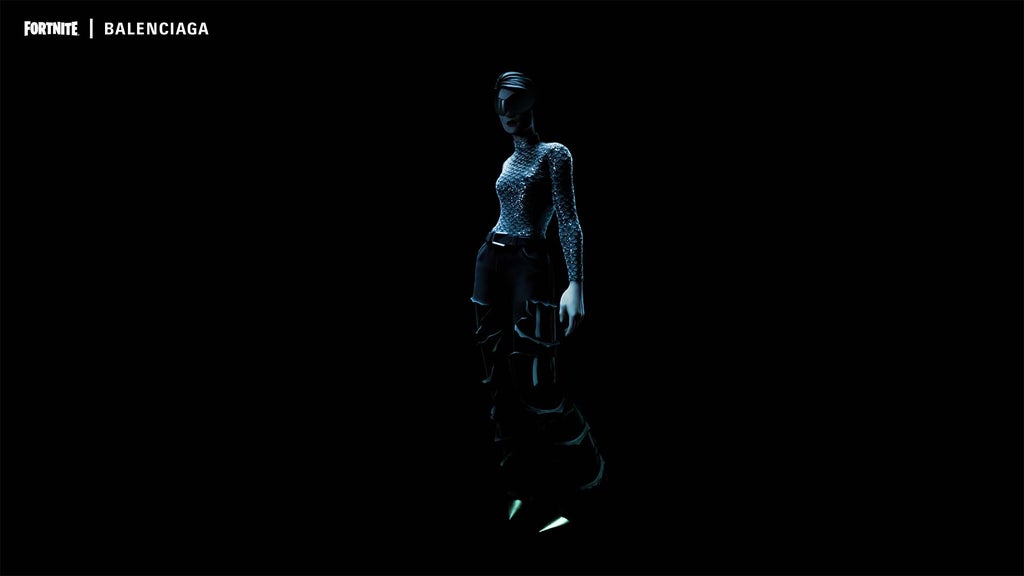What Do Fashion & Gaming Have In Common? It Turns Out, Quite A Lot
September 21, 2021BruceDayneModel Jasmine Asia has been an avid gamer since she was a child growing up in London as the daughter of Bangladeshi immigrants. Although she now gravitates toward games like Call Of Duty, Asia’s love of gaming first grew out of fashion games like Bratz’s early aughts video games: “I’d always be running faster to unlock chic outfits.” Now a professional model, Asia sees her job as related to why she’s always loved gaming: “I never want to look like myself,” said Asia. “I want to become an out-of-this-world character every time.”
According to a recent report from the consulting firm Accenture, the worldwide gaming industry is worth over $300 billion. Games aren’t just products unto themselves, but also provide real estate of which other brands can use for advertising their own non-digital wares, and sometimes even sell digital versions of their clothes. Games like Fortnite have partnered with fashion brands to bring style into their metaverse, offering players the ability to change their avatars’ outfits using high fashion items, style them any way they’d like, and even spend real money on digital clothes.
Fashion brands like Balenciaga, Gucci, The North Face, and Christian Louboutin are getting involved. Last year, Balenciaga presented its fall winter 2021 collection through “Afterworld: The Age of Tomorrow,” a game that accompanied a digital runway. Set in 2031, Afterworld takes its hero through various zones — a store, a desolate street, a forest, a cave — as it journeys to its final challenge to capture a sword that would return its protagonist back to reality. Meanwhile, Gucci has partnered with cult games like Tennis Clash, The Sims, Genies, Roblox, Pokémon Go and Animal Crossing to create items available for digital avatars to wear. In 2019, the Italian brand launched its own game in partnership with Forestry Games; called “Gucci Grip,” the choose-your-own-adventure journey saw a skater advance through various settings by collecting Gucci-branded trinkets and badges. The game earned not only fans’ approval, but industry cred, with a nomination at the 2020 Awwwards, one of the premiere competitions for professional web design.
On September 20, industry heavyweight Epic Games announced it’s joining forces with Balenciaga and its creative director Demna Gvasalia to create outfits for Fortnite’s 4.8 million users. The game, which Epic describes as a “world of many experiences,” allows players to choose gaming modes that take them from fighting other players in a battle royale to saving the world and attending virtual concerts starring Ariana Grande and Travis Scott.

And just like in our physical world, style has become a major element of the metaverse. “Fashion is an important cultural element that needs to be part of Fortnite and the metaverse, just like music, sports or entertainment,” said Emily Levy, Senior Manager of Partnerships at Epic Games. “The entire player experience is centered on agency, fantasy, and self-expression while engaging with others.”
The impetus to make real life feel more science fiction is also happening on social media. On TikTok, the #chooseyourcharacter trend has generated over 1 billion views this past year, with users reinterpreting the famous Super Smash Bros sound into scenarios that make their lives look like a game. They’re also dressing for it. In each video, creators use style to present their version of characters, whether in real life, pop culture, or science fiction, building personas in universes like Gossip Girl, Disney movies, and street style aesthetics. While the challenge is not entirely linked to the gaming community, it’s a clear example of how, much like fashion, gaming is about building personas from the ground up.
Julles Hernandez, a Puerto Rico-based stylist and journalist, is hoping to be able to parlay her knowledge and affinity for gaming into a career as a stylist and consultant within gamer crowds. As a kid in Puerto Rico, Hernandez played video games like Call Of Duty and Halo along with fashion games like the MyScene dolls’ computer programs, which Hernandez said first taught her about using style as a means of self expression. But it wasn’t until she started dating her current boyfriend, also a gamer, that she entered the world of esports. Back in August, she packed her bags to attend the Call Of Duty Championship in Los Angeles to socialize with top tier gamers, and get them on board for a unique business proposal. What Hernandez wanted to do was not only to style these gamers, but to also position them as influential figures within the fashion space, much like Asia has become.
Asia has noticed her fashion and gaming worlds blending from the other direction. Asia recently signed to ANTI Models which bills itself as an agency intent on dismantling traditional beauty standards. Her agent was less interested in positioning her as a model than they were as a person well-versed in fashion and gaming. For the past few years, she’s focused on gaming crossover projects with brands such as Pat McGrath and Agent Provocateur. For the latter’s “Fearless Femininity” campaign, Asia appears playing video games while wearing the brand’s lingerie. As somebody who grew up believing that her nerdy interests would never be accepted outside the gaming landscape, the project gives her a sense of purpose that most ad campaigns don’t. “I feel like I am a character and just being connected to gaming heroines as a kid, it’s just natural for me to feel like I can portray them.”
Like what you see? How about some more R29 goodness, right here?
Technology’s Role In The Adaptive Fashion Movement
The Digital Fashion Experience Isn’t The Same
This Beauty Influencer Takes Makeup To The Extreme
DMTBeautySpot
via https://dmtbeautyspot.com
Frances Solá-Santiago, DMT.NEWS, DMT BeautySpot,


0 comments